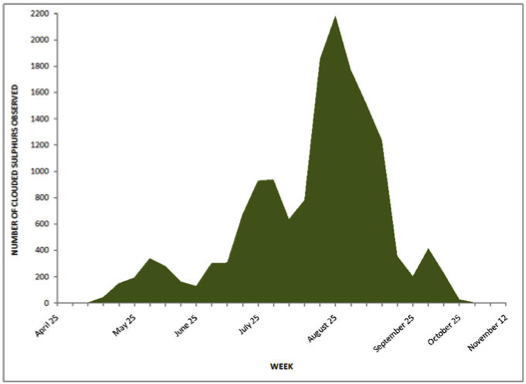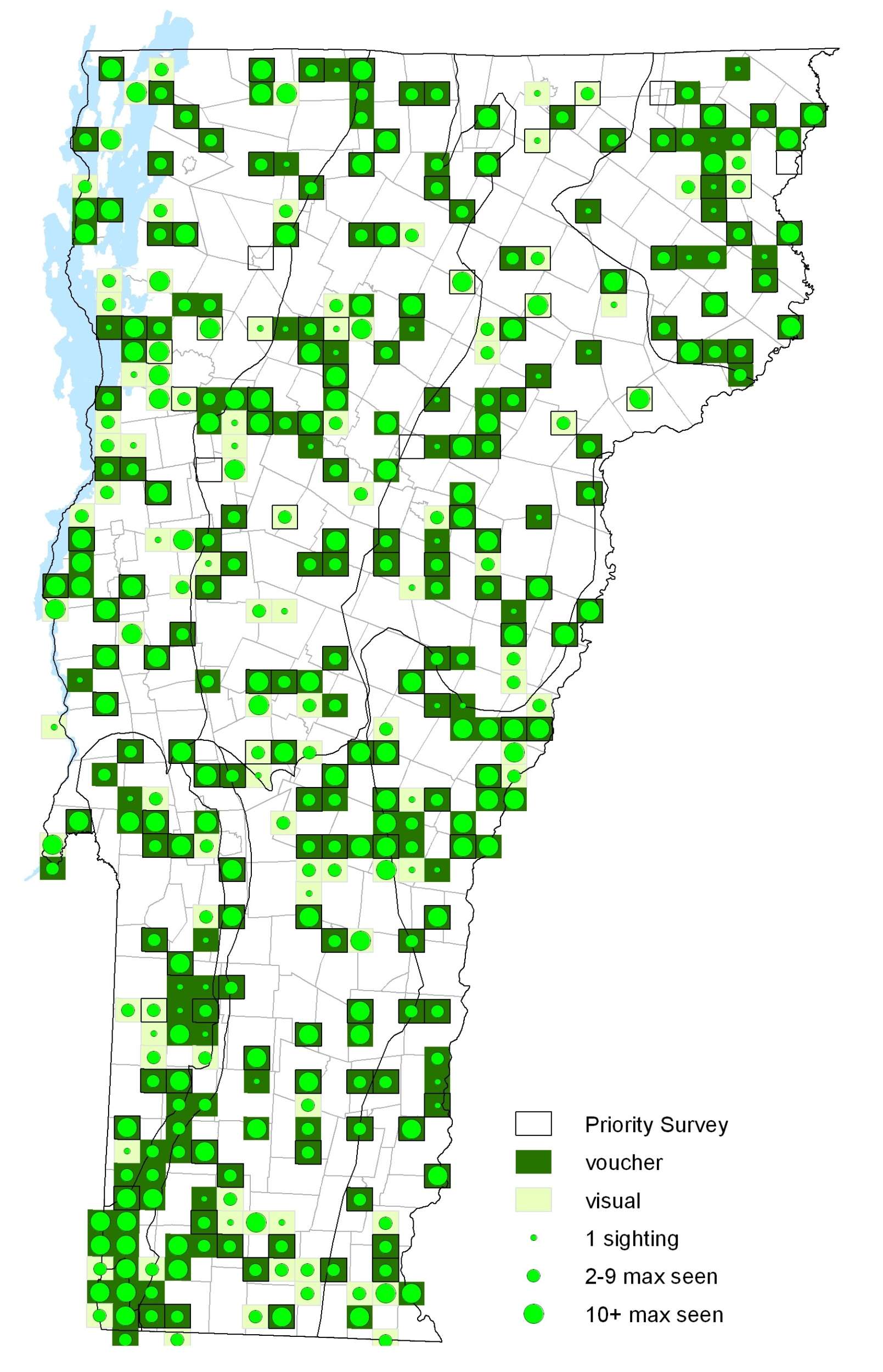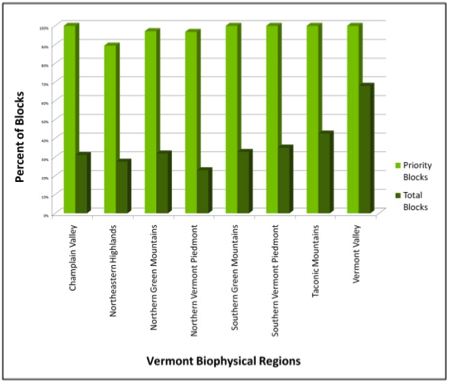Previously a butterfly solely of the northeast, its range has expanded south and west with the planting of forage crops, predominantly alfalfa and other legumes. This has caused an overlap in the ranges of the Clouded and Orange Sulphurs and subsequent hybridization of the two species in areas where they are Sympatric. Unlike male Orange Sulphurs, the male Clouded Sulphur does not reflect ultraviolet light. Instead, it releases a pheromone to attract females.
Identification
Upper surface of male wings bright, clear yellow with solid black edging; lower side of forewing with some dark submarginal spots; hindwing with silver cell spot rimmed with orange-pink, usually doubled. Female has two forms: yellow form with uneven black edging enclosing yellow spots, and a white form which is greenish-white rather than yellow. Spring and fall forms are smaller and less conspicuously marked.
Conservation Status
Resident – Common
Vermont S5
Global G5
Flight 
With at least two, sometimes more, overlapping generations, the Clouded Sulphur was found from the end of April through the end of October. Though its numbers in the Northeast have apparently declined, they remain abundant, especially in late summer.
Distribution and Habitat
North American Range- Alaska south through central and southeast Canada, all of conterminous United states except much of California, south Texas, and most of Florida.
Common and sometimes abundant throughout Vermont, preferring meadows, pastures and disturbed sites. Caterpillars feed on legumes such as White Clover (Trifolium repens), Alfalfa (Medicago sativa), and Red Clover (Trifolium pratense). Adults nectar from a wide range plants including goldenrod (Oligoneuron), milkweed (Asclepias), and Joe Pye Weed (Eupatorium purpureum).







